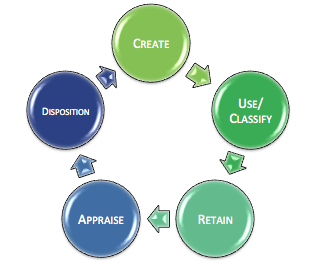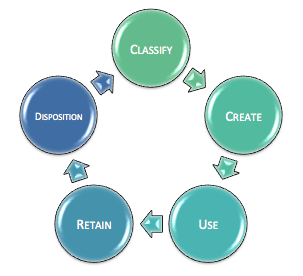As RIM professionals we use the records lifecycle to track the movements of records through its various life stages (e.g. “active” and “inactive”). There are many interpretations of the main stages in a records lifecycle, but they always start with the same one: Create.

The starting point of the lifecycle is where I see a fundamental disconnect with records creation and lifecycle management. We persist in following the same diagram of records lifecycle management without talking into consideration how many systems already exist where records are created in a classified environment. Or even to stop and consider how many records in the physical world are “classified” before creation (i.e. through the use of forms and templates).
Where did this idea come from that we create first and consider why we created it later? Why not think about what we need to create and why, and then create an environment that supports this line of thinking?
The lifecycle should be modified to account for scenarios where records can be created in a controlled and structured environment. This means the records would be classified and organized at creation. Classification would then be the first step in lifecycle management emphasizing a fundamental need to understand why a record is created in the first place and in what context. I believe this is a model we should strive towards as Information Professionals. It would look something like this:

Employing this modification of the lifecycle means the record creator would always know and understand what s/he is creating at the moment of inception. And even if the context was not well understood by the creator (i.e. a “user), a controlled environment could account for this shortcoming thereby solidifying the relationship between the process and records created as a result of an action.
One way to accomplish this is through workflows. As soon as the workflow is started, the record is already being created in a structured environment. Many workflow applications also allow metadata to be part of the document from creation. This is a great opportunity to integrate the steps in the workflow with stages in the record lifecycle.
Another opportunity exists by creating templates for records that are created on a routine and systematic basis. Metadata can be embedded right into the document template, including the classification of the record before the content is even developed. These are just a couple of options to illustrate how a modified interpretation of lifecycle management could be achieved.
#ElectronicRecordsManagement #InformationGovernance